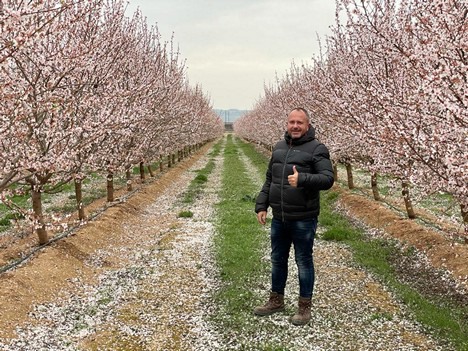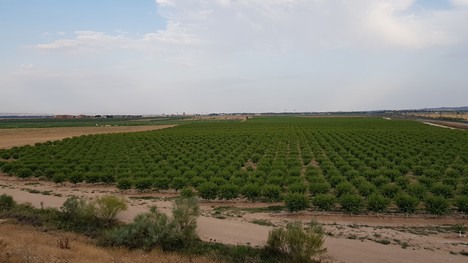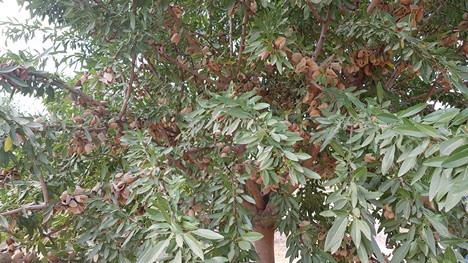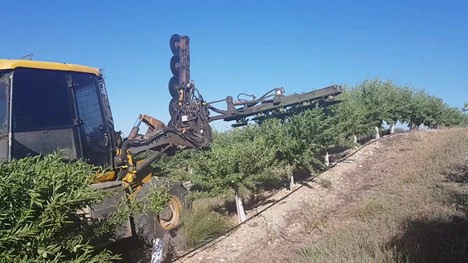Jordi Mor is a Spanish agricultural technician boasting years of experience in the cultivation of stone fruit, and he is also a promoter of the Zaragoza model, a new revolutionary method to manage almond groves that has proved successful not only in Spain and Italy, but in other continents as well.
 Jordi Mor
Jordi Mor
FreshPlaza (FP): How and when was the Zaragoza model created?
Jordi Mor (JM): Up until 2014, almonds were cultivated in two ways - either with the traditional system, which involves few plants per hectare (around 350 plants/hectare) thus producing low yields, or with a superintensive system with up to 2500 plants/hectare and a considerable initial investment. Over the years however, the increasing interest for the superintensive method has led to plant availability problems while, in well-established groves, plants tend to produce less after a period of high efficiency (around 7 years). I started from here, with the aim of creating a method that was in between, i.e. that could half the investment needed, hasten production and improve yields in terms of both quality and quantity.
 Two-year-old almond grove managed with the Zaragoza method (Spain).
Two-year-old almond grove managed with the Zaragoza method (Spain).
FP: What are the strengths and weaknesses of the Zaragoza model?
JM: It needs little labor and working hours, plants are formed already after 30 months (less than 3 years), the investment required is contained making it easier to obtain a loan, and the risk is low although yields are similar to those achieved with the superintensive method.
For the Zaragoza model, I have come up with a business plan that was useful especially with the more skeptical producers. It was hard in the beginning but, when growers realized production started earlier (two years after transplants), volumes were excellent and the initial investment was recovered already after 3-4 years, the model promoted itself.
 Plant three years after being transplanted.
Plant three years after being transplanted.
The only weakness was harvesting, as my idea was to hasten operations via mechanized systems without shakers, nets or labor. This is a problem we have nearly solved. Together with a team of engineers and companies, in fact, we are developing a new harvester that will be called 'Zaragoza Harvester'. It will be easy to use, inexpensive and not very big, so it will be useful for groves with a density of up to 1000 plants per hectare (5mx2m layout).
FP: When will this new machine become available?
JM: Not before 2022, I believe. We need to perfect it and test it but, to shorten the times, it will be used already during the next almond campaign both in the northern and southern hemisphere, so we can test it in different environments and with different varieties.
FP: What kind of entrepreneurs usually opt for this method?
JM: The Zaragoza model is suitable for both small entrepreneurs and big companies looking to plant hundreds of hectares. We are talking about a model that does not need a lot of specialized labor.
FP: How important is it to work with technicians/agronomists to achieve excellent results?
JM: In this new management system, technicians are essential especially in the first phases, when specific pruning is planned to obtain bushy-cylindrical foliage with a diameter of 180-200 cm, a total height of 220-240 cm and a trunk of 75-80 cm. Agronomist Vito Vitelli has promoted the Zaragoza method in various almond cultivation areas in both northern and southern Italy.
 Plant topping during the first year of transplants
Plant topping during the first year of transplants
The Zaragoza management system works well in present times as extraordinary results can be achieved with a small investment and little labor. It is not my idea, but an elaboration of needs that have stemmed from the fields, from companies that do not follow trends or the interests of agricultural machinery suppliers. The Zaragoza method provides solutions that are beneficial to the whole chain and that can be adapted to all contexts.
For further information
Jordi Mor
+34 650817711
